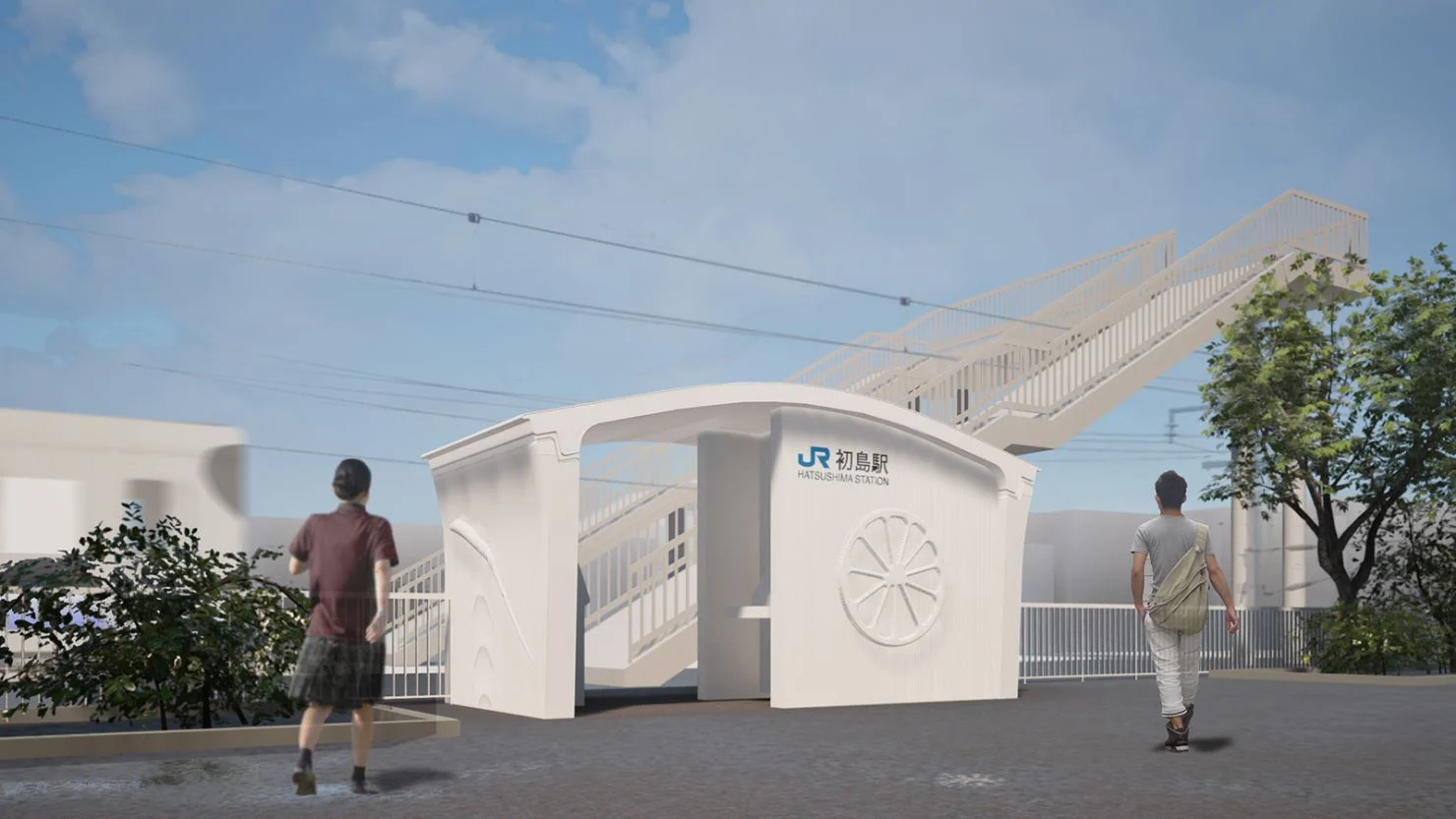Blog Credit: Trupti Thakur
Image Courtesy: Google
India’s First 3D Printed Post Office
India’s first 3D printed post office is now open for business in Bengaluru
3D printing technology was adopted to build this building as it saves cost by 30% and time when compared with conventional construction methods
The 3D printed post office in India was inaugurated at Cambridge Layout in east Bengaluru on August 18 by Ashwini Vaishnaw, Union Minister for Railways, Communications and Electronics & Information Technology.
This is said to be the first commercial building to have used 3D printing technology. It has a built-up area of 1,000 square feet.
The post office was built with 3D Concrete Printing Technology by Larsen and Toubro Construction. It was originally scheduled to finish within 45 days. However, work was completed in 43 days. Indian Institute of Technology (IIT) Madras helped the construction team with the structural design.
The post office will house the Ulsoor Bazaar post office, which will henceforth be known as Cambridge Layout post office.
Praising the energy and positivity of Bengaluru during the inauguration, Mr. Vaishnaw said, “This city always presents a new picture of India. This 3D post office building, which we saw today, is that new picture, and also represents the spirit of India today. That is the spirit with which the country is progressing.”
Bengaluru Central MP P. C. Mohan suggested that, not just the postal department, but various government departments should integrate 3D printing technology for their buildings. “As the design can be customised to each site, it could be a cost-cutting solution,” he said.
3D printing technology was adopted to build this building as it saves cost by 30-40% when compared with conventional construction methods. While taking less time, the technology also offers more flexibility to the shape of the building. The postal department released a special cover of the 3D printed building.
Taking to social media platform X, Prime Minister Narendra Modi, said, “Every Indian would be proud to see India’s first 3D printed post office at Cambridge Layout, Bengaluru. A testament to our nation’s innovation and progress, it also embodies the spirit of a self-reliant India. Compliments to those who have worked hard in ensuring the post office’s completion.”
India has unveiled its first 3D-printed post office, inaugurated virtually by Union Minister Ashwini Vaishnaw in Bengaluru’s Cambridge Layout. The post office, built by Larsen & Toubro Limited in just 43 days, demonstrates the rapid advancement of 3D printing technology. Initially introduced in the 1980s, 3D printing struggled with cost and precision issues. However, recent innovations have overcome these hurdles, leading to its integration in industries like automotive, aerospace, and healthcare.
Also known as additive manufacturing, 3D printing involves creating objects layer by layer using digital models. It diverges from traditional manufacturing methods that involve subtracting material. This pioneering post office project highlights the transformative potential of 3D printing in construction and beyond, as it finds applications in various sectors, from crafting rockets to producing medical equipment.What is the significance of India’s first 3D-printed post office?
The inauguration of India’s inaugural 3D-printed post office in Bengaluru signifies a major stride in innovative construction methods. Constructed in under two months by Larsen & Toubro Limited, it underscores 3D printing’s potential to reshape architecture and beyond.How has 3D printing evolved over the years?
From its inception in the 1980s, 3D printing has matured significantly. Initial challenges included cost and precision concerns. However, recent advancements have made it more accessible and accurate, expanding its use across diverse industries.What is additive manufacturing, and how does it work?
Additive manufacturing, or 3D printing, involves layering materials to create three-dimensional objects from digital designs. This contrasts with traditional methods that often require removing material to achieve the desired shape.What are the applications of 3D printing in industries beyond construction?
The applications of 3D printing extend far beyond construction. Industries like aerospace, automotive, and healthcare have harnessed its potential. It has been instrumental in producing rockets, medical supplies, and even critical ventilator components during the COVID-19 pandemic.How does 3D printing differ from traditional manufacturing methods?
Unlike traditional subtractive manufacturing, which involves cutting away material, 3D printing employs an additive approach, building objects layer by layer. This enables greater complexity and customization in design.What are the limitations and potentials of 3D printing?
While 3D printing has made significant strides, challenges remain, such as material limitations and potential quality issues. Nevertheless, its capacity to revolutionize industries, minimize waste, and enable intricate designs positions it as a technology with remarkable promise.
The International Organization for Migration (IOM) has reported that a staggering 79% of Afghans lack sufficient access to clean water for essential needs, exacerbated by the worst drought in 30 years, economic instability, and decades of conflict. The dire situation has led to half of the population facing acute hunger, with six million people on the brink of famine.
The International Organization for Migration (IOM) has requested $33 million in funding to offer water, sanitation, and hygiene support to 2.3 million Afghan citizens throughout the year 2023. With 25 of 34 provinces experiencing severe or catastrophic drought conditions, the United Nations Office for the Coordination of Humanitarian Affairs (OCHA) emphasizes the need for urgent international attention to address the crisis. Despite the extensive challenges, only 23% of the required $3.23 billion in funding for humanitarian assistance has been received, further endangering vulnerable Afghans.
What percentage of Afghans lack access to sufficient clean water, and what are the primary causes of the water crisis?
According to the International Organization for Migration (IOM), 79% of Afghans lack access to clean water for essential needs. The crisis results from a combination of factors, including severe drought, economic instability, and the enduring impact of decades of conflict.
How have compounding factors like drought and economic instability contributed to acute hunger and potential famine in Afghanistan?
The interplay of severe drought, economic turmoil, and long-standing conflict has resulted in a dire situation where 50% of the Afghan population faces acute hunger. Six million people are on the brink of famine due to limited access to food and resources.
What actions has the International Organization for Migration (IOM) taken to address the water crisis in Afghanistan?
The IOM provided water, sanitation, and hygiene aid to 160,000 people in Afghanistan. They have appealed for $33 million to offer essential assistance to 2.3 million Afghans in 2023. The organization emphasizes the urgency of addressing the ongoing water and hygiene crisis.
What impact has the Taliban’s control and lack of international recognition had on humanitarian aid to Afghanistan?
The lack of recognition of the Taliban regime has hindered the aid process in Afghanistan. Additionally, the Taliban’s interference in assistance has further complicated humanitarian efforts, contributing to the current challenges.
What is the extent of Afghanistan’s humanitarian crisis beyond the water shortage?
Afghanistan is facing one of the most severe humanitarian crises globally, with 29.2 million people requiring assistance for survival. The country also suffers from alarming malnutrition rates, with 3.2 million children and 840,000 pregnant and nursing mothers experiencing malnourishment.
How has economic collapse, climate change, and reduced access to basic services impacted Afghanistan’s overall humanitarian situation?
Economic collapse, climate change, and limited access to essential services have led to a 60% increase in the number of people in need in Afghanistan. The humanitarian response has been hampered by funding shortfalls, negatively affecting the well-being of the population.
According to the postal officials, the construction of this post office building was carried out by construction company Larsen & Toubro Limited while IIT Madras provided technical guidance.
After the inauguration, Vaishnaw, who holds the Railways, Communications, Electronics and IT portfolios, said: “The spirit of development, the spirit of developing our own technology, the spirit of doing something which was considered impossible in the earlier times. That’s the defining feature of these times.”
Narendra Modi Ji called it a “testament to our nations innovation and progress”, which embodies the “spirit of self-reliant India.”
Speaking about the unique building, Vaishnaw said this new construction technology was carried out through 3D-concrete printing technology, which is a fully automated building construction technology wherein a robotic printer deposits the concrete layer-by-layer as per the approved design and special grade concrete that hardens quickly is used to ensure bonding between the layers to print the structure.
The entire construction activity was completed in a period of 45 days as compared to about six to eight months taken by the conventional method.
Cost and time savings make 3D-concrete printing technology a viable alternative to conventional building practices.
“Having a 3D-printed concrete building constructed on site is a great initiative. This is a technology demonstrator. IIT Madras has done fabulous work on this. When this technology will become mainstream, we will see more such initiatives on taking this technology forward,” Vaishnaw told reporters.
He also added that nobody had ever thought that India would be developing its own 4G and 5G technology. “Nobody ever thought that India would manufacture its complex telecom equipment.”
Blog By: Trupti Thakur

21
AugFirst 3D Printed Post Office
Aug 21, 2023Recent Blog
The ITES-QApr 17, 2025
The UPI Circle Of PhonePeApr 16, 2025
Dangerous AI In HealthcareApr 15, 2025
Google’s Iron Wood ChipApr 14, 2025
World’s First 3D Printed Train StationApr 11, 2025




